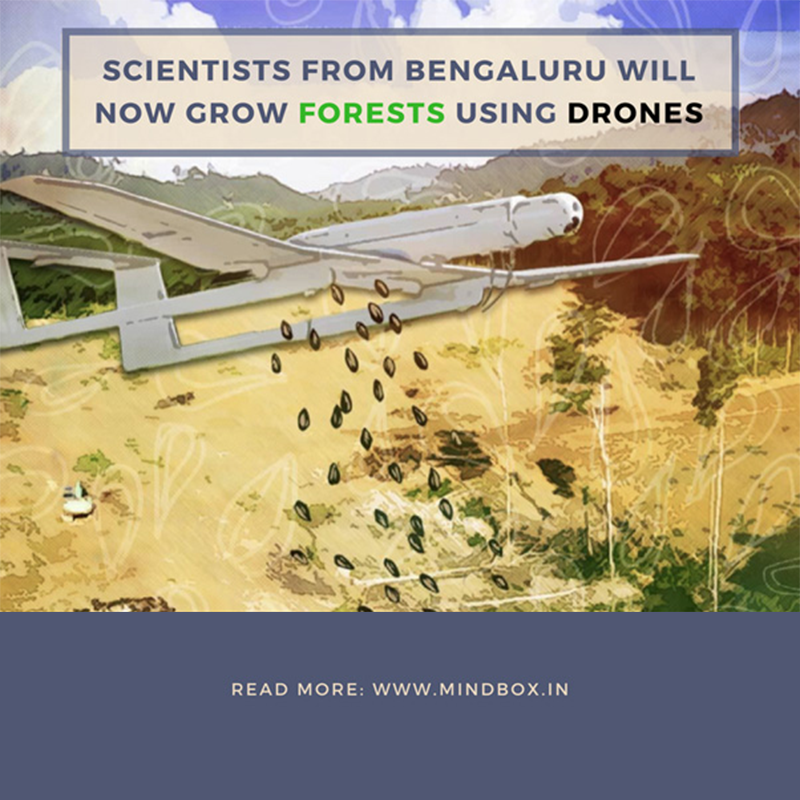Scientists From Bengaluru Will Now Grow Forests Using Drones

In an attempt to increase the forest cover in the state, a group of scientists from the Indian Institute of Science (IISc), Bengaluru, are using drones to disperse seeds on barren lands.
Alarmed by how fast natural habitats and wildlife are disappearing, the nature lover was inspired to make a difference.
The program was piloted by Professor KPJ Reddy and his colleagues on the banks of river Pinakini in the Gauribidanur area in Karnataka’s Kolar district on June 5 on the occasion of World Environment Day.
“We’ve chosen one sample area in which to fly and do the seed-dropping. Now we’re trying to make a more scientific study…the advantage with drones is that we have the image before dropping the seeds, and can geotag the path. Subsequently, once every three months we can fly over that area and see the impact of dropping the seeds,” Professor S N Omkar, another scientist involved in the project explained.
“What we have in mind is to at least seed 10,000 acres, and we will be doing this every year, for three consecutive years” — Professor S N Omkar
The 10,000-acre patch of land is spread around the Doddaballapur hill range, north of Bangalore. The initiative is spearheaded by a committee that’s building a 200-acre science center in Gauribidanur.
Under the forest department’s supervision, the seeds have been wrapped in balls of manure and sand to ensure they do not go to waste. Imli, amla, and other regional monsoon seeds have been selected for planting. Locals will look after the day-to-day work.
The drones are capable of lifting 10 kg and can stay in the air for an hour at a stretch. While talking about the project, Reddy said, “I cannot predict how successful the project is going to be. However, I am an optimistic person and I hope that our mission is successful.”

In a report in The Wire, Suvasini Ramaswamy, a researcher at the Salk Institute for Biological Studies in California cited the following analytical and implementation challenges that come with the usage of drones for agriculture:
Outdoor use is highly weather dependent. Imaging can vary depending on sunlight and cloud cover although one can account for ambient lighting conditions. Limited internet access and cellular infrastructure can make it harder to rely on cloud-based computing services.
Higher costs especially for small landholders in emerging economies. Limited flight times. Maintenance costs and resources. The need for skilled operators. Uncertain government regulation that need to be overcome before this technology can be widely applied.
Powered by Froala Editor